Media | Articles
10 automotive marriages made in heaven
This (and every) Valentine’s Day, we take a moment to celebrate two becoming one. We buy cards, chocolates, and dozens of roses to mark the couplings which lead to a successful and long-lasting relationships.
In the car industry there’s plenty to cheer as well, as these ten happy manufacturer marriages prove.
Toyota and Subaru
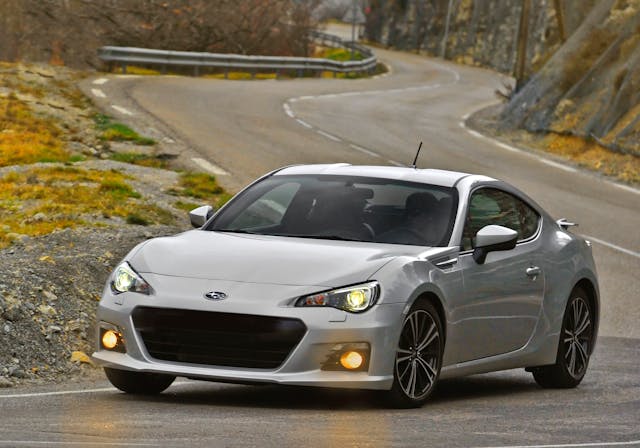
Toyota and Subaru hooked up in 2008 in a marriage of convenience when the Japanese giant took a 16.5 percent share of its smaller rival. After a four-year honeymoon period, their first offspring was a set of terrific twins: the Toyota GT86 (née Scion FRS, for the U.S.) and the Subaru BRZ.
Toyota did most of the design and engineering work, but the cars’ character came from their shared Subaru flat-four motor. Just the right amount of power and just the right amount of grip made the BRZ/GT86 siblings a hoot to drive and drift. The first generation lasted nine years with a follow-up arriving in 2021 that’s every bit as entertaining … with yet another name change for the Toyota, to GR86.

Lotus and Chevrolet

Lotus has been married and divorced more times than Donald Trump, having formal relationships with General Motors, Bugatti’s Romano Artioli, Proton, and now Geely.
Marketplace
Buy and sell classics with confidence
During its seven-year hitch to GM, Lotus Engineering was brought in to work on a number of GM group products including the Isuzu Piazza Turbo, the Vauxhall/Opel Lotus Carlton, the Dodge Spirit R/T, and the C4 Chevrolet Corvette ZR-1. For the “King of the Hill,” Lotus designed a 5.7-liter, 375-hp aluminum block, quad-cam, 32-valve V-8, and installed adjustable Bilstein suspension to live up to the “handling by Lotus” moniker.
Mercedes and AMG
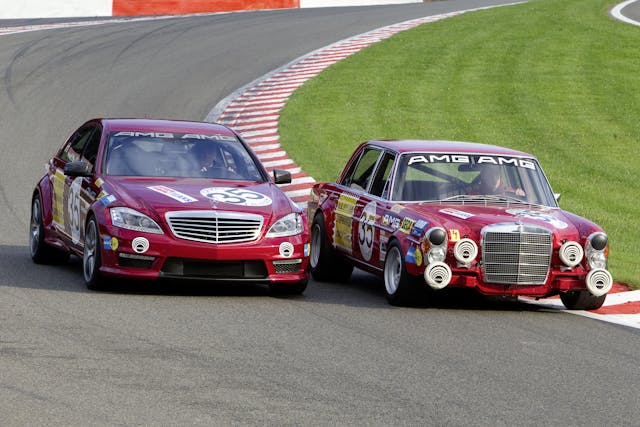
The story of AMG actually began inside 1960s’ Mercedes-Benz when Hans Werner Aufrecht and Erhard Melcher worked together on the 300 SE racing engine. They left to form their own business Aufrecht Melcher Großaspach in 1967 and by 1971 were world famous after their “Red Pig” AMG Mercedes 300 SEL won the 24 Hours of Spa.
Alongside continued racing success Aufrecht and Melcher moved on to tuning Mercedes’ road cars, developing their own engines from 1984. In 1990 the quality of AMG’s engineering was recognized by Mercedes and the pair signed a cooperation contract. In 2005 AMG was acquired by Mercedes leading to the in-house skunkworks that we know so well, thanks to cars ranging from the C36 to the wild One.
AC and Shelby

When this small British sports-car maker and all-American racer hooked up, there were fireworks. Carroll Shelby identified the little AC Ace as a potential race winner if it could just pack a bit more of a punch and enlisted Ford for a motorsports ménage à trois.
The Shelby Cobra and its small-block V-8 would make history at Le Mans, Daytona, Monza, and the Nürburgring, to name but three of its famous victories. In the 60 years since it was conceived, the Cobra has continued to be built on both sides of the Atlantic in numerous iterations. A legend that lives on and on.
McLaren and BMW
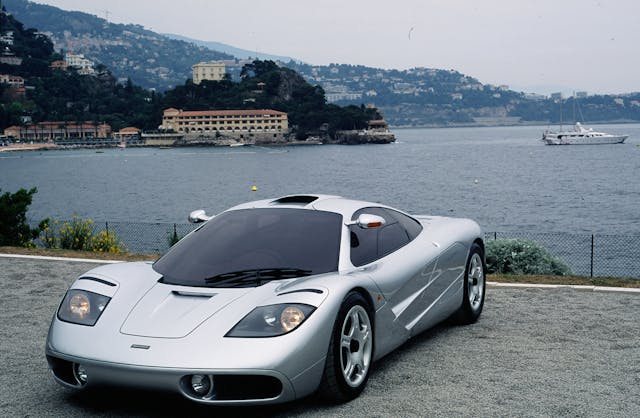
The story of the McLaren F1 has been told many times over, but if it weren’t for the relationship forged between Gordon Murray and Paul Rosche at BMW, would this midengine beast have been such a spectacular success?
Murray had been looking to the Formula 1 team’s engine supplier Honda to provide a V-10 but the collaboration didn’t work out. BMW’s M Division came to the rescue with a bespoke, 6.1-liter, 620-hp V-12, quite possibly the best engine ever built by the German brand.
Mercedes and Porsche

In the early days of Mercedes’ romance with AMG, the company was also conducting a one-car stand with Porsche. The result of this dalliance was the 500E, a high-performance version of the W124 E-Class, which was hand-assembled by Porsche.
It was powered by a five-liter V-8 from the SL roadster, with uprated brakes to cope, and building it was anything but simple. Each one had to be shuttled the 20 miles between Mercedes at Sindelfingen and Porsche in Zuffenhausen. Mercedes provided a kit of parts to which Porsche added the car’s flared front fenders, then the 500Es would be back to Benz for painting, before taking a last trip to Porsche for final assembly. It was a complicated arrangement, but made for one of the most exciting sedans of the early ’90s.
Porsche and Audi

Porsche’s affair with Mercedes fizzled out when the last 500E was built, but few rebound relationships produce better results than the RS2, which Porsche built for Audi on the same production line.
Porsche started with the sensible B4 Avant—and went all-out on its 2.2-liter five-cylinder engine. In addition to a bigger turbo and intercooler, plus uprated injectors, Porsche upgraded the powertrain’s cooling and induction and exhaust systems to justify the “Powered by Porsche” cast on the engine’s cam cover. Porsche-branded Brembo brakes sat behind Porsche Cup alloy wheels and the interior was given a retrim with Recaro seats and white instrumentation. Quattro AWD empowered the RS2 to hit 62 mph in just 4.8 seconds—faster, indeed, than the pure-blooded Porsches of the day.
Fiat and Mazda
New Mazda Miatas don’t come along often, just once a decade since the car’s 1989 debut, in fact. Even though the Miata had just hit the million mark, the Japanese knew they’d need a partner to help fund the fourth generation (interally known as the ND), launched in 2014.
Enter an international marriage between Japan and Italy. At first it appeared that Alfa Romeo was being wooed to build a new Spider, but in the event it was Fiat that accepted Mazda’s offer and so its 124 would be built alongside the Miata in Hiroshima. Mazda stuck with revvy normally-aspirated engines, and styled the car around its sleek Kodo Soul of Motion design language. Fiat opted for a turbocharged motor and a more retro look, ensuring that the siblings had quite different characters.
Dodge and Lamborghini

Lamborghini and the Chrysler group had a six-year attachment after the Americans came to the Italians rescue in 1987. Chrysler money ensured that the Countach got a replacement in the form of the Diablo, but there were strings attached. Chrysler used its exotic partner’s name on ill-conceived concept cars like the Portofino sedan and the Bertone Genesis minivan, but one very good thing did come out of the affair: the Dodge Viper.
Chrysler commissioned Lamborghini to transform an iron-block V-10 truck motor into an engine fit for a sports car. Recast in aluminum, Lamborghini’s eight-liter version produced 400 horsepower, giving the Viper the bite it needed. In fairness, it wasn’t a completely one-sided relationship, as the Diablo was penned by Chrysler’s Tom Gale, who also designed the Viper.
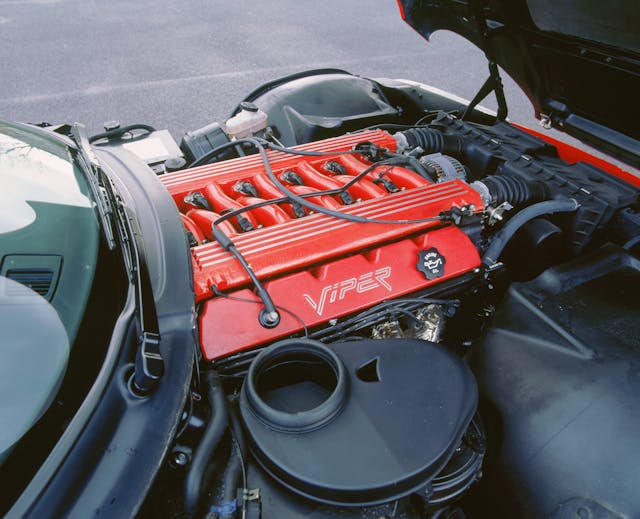
Ford, Volvo, and Aston Martin

Aston Martin couldn’t say no when Ford made a very decent proposal to take over the British brand in 1987. Arguably the most successful offspring of their decade together was actually the result of a throuple with Volvo.
For the 2005 V8 Vantage Aston Martin needed higher-end touchpoints than the Blue Oval had in stock, but the recent addition of the Swedish brand to Ford’s Premium Auto Group meant items such as the key and pop-up infotainment system could be sourced from the now-shared parts catalog. A three-way marriage of convenience, you might say.
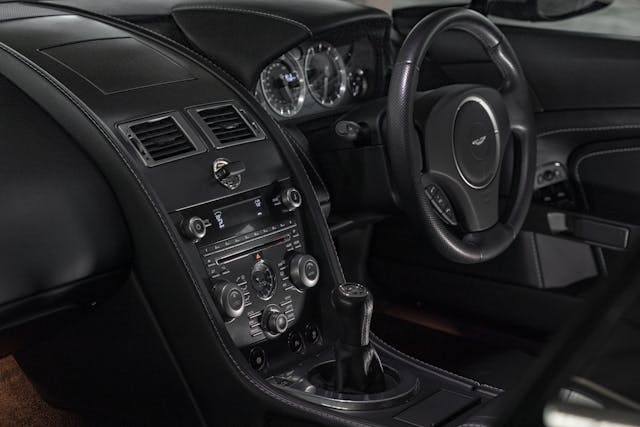
Check out the Hagerty Media homepage so you don’t miss a single story, or better yet, bookmark it. To get our best stories delivered right to your inbox, subscribe to our newsletters.


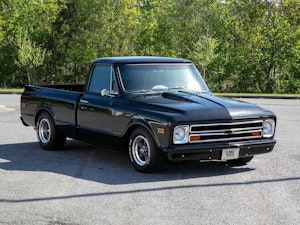


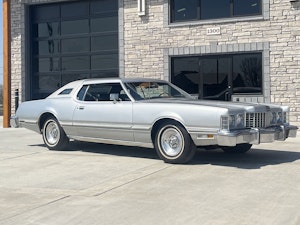



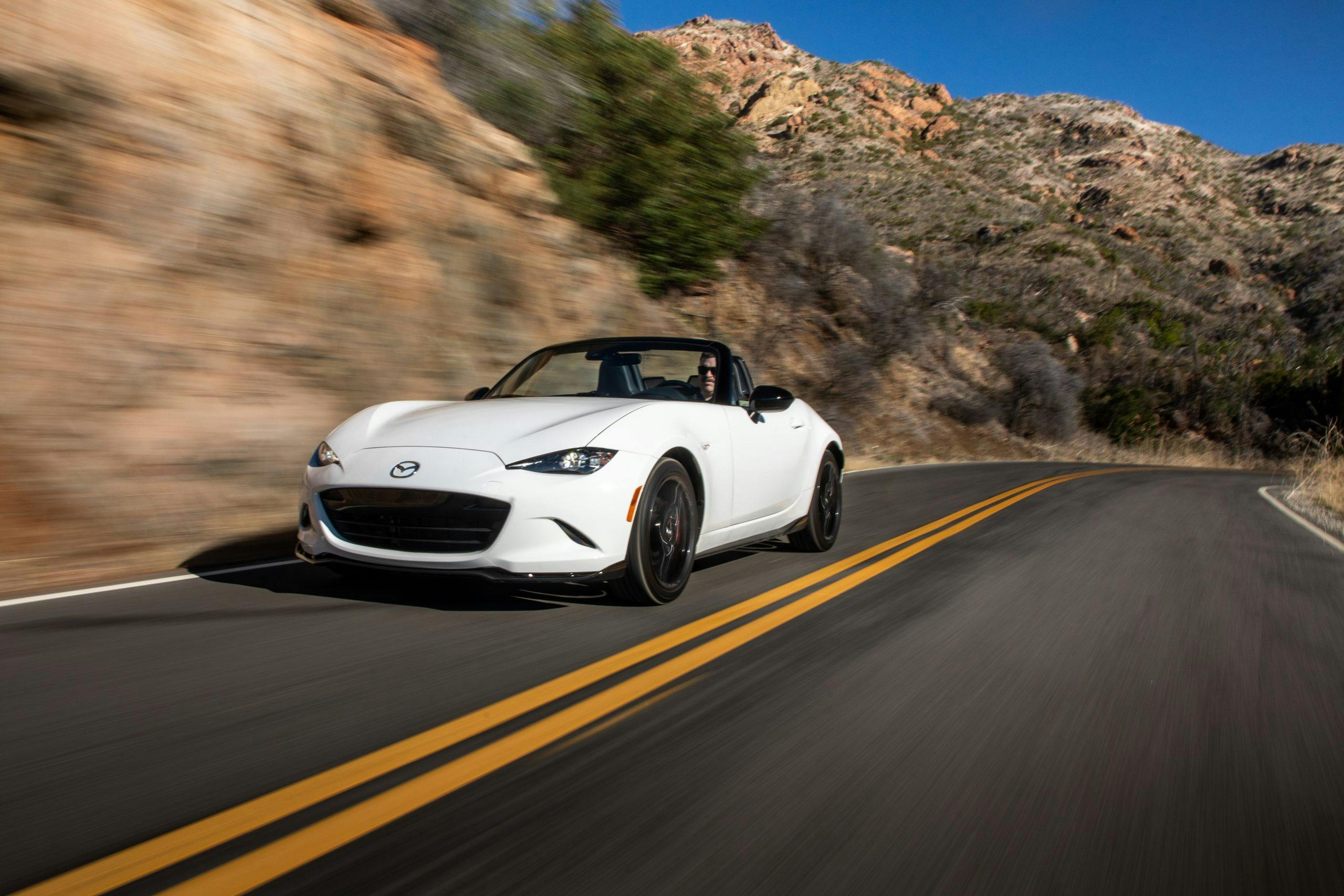
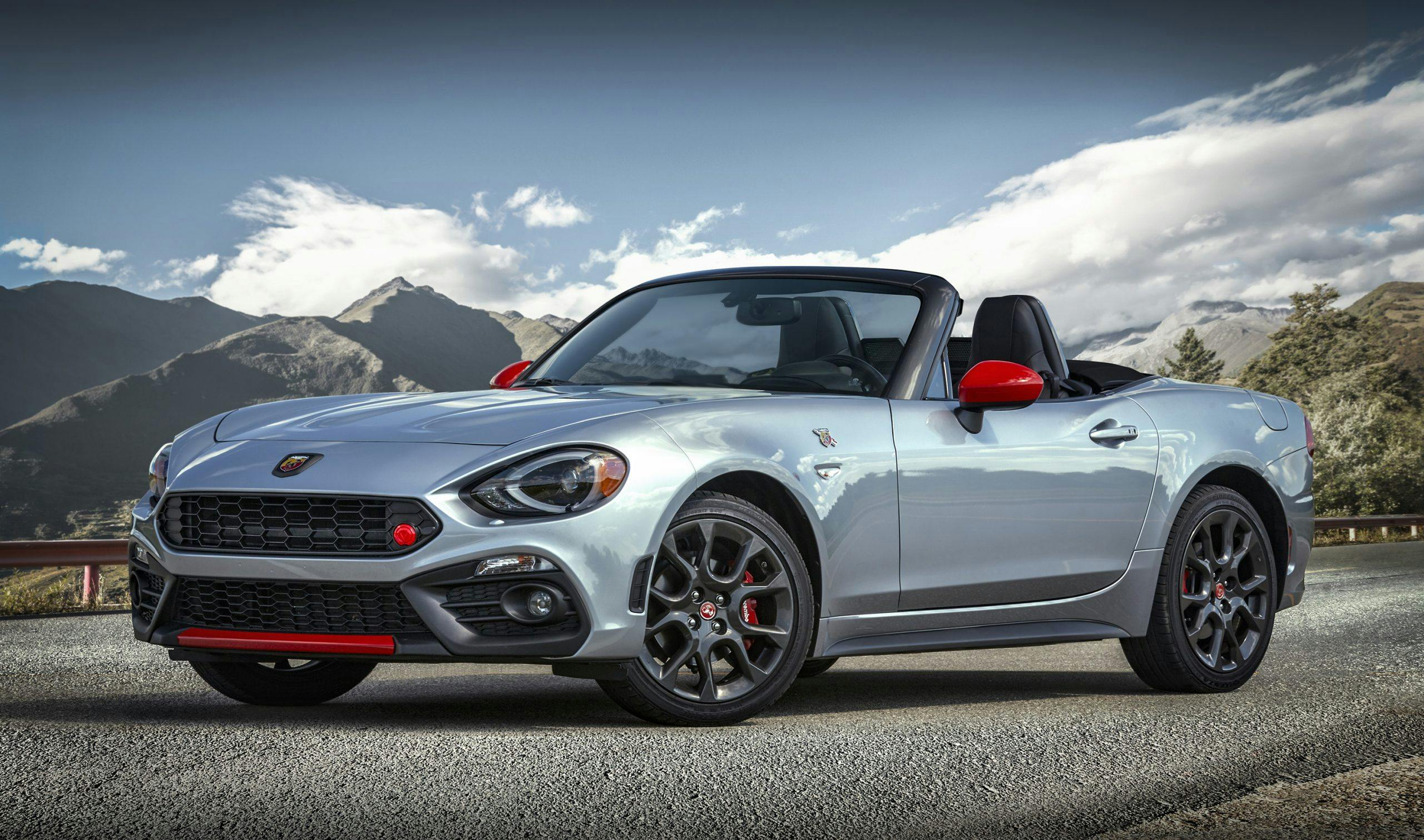
















Lotus and Ford. The relationship produced the Lotus Twin Cam engine, based on the Ford “Kent” block, a win at the Indy 500, the Ford Cosworth DFV engine, and multiple F1 championships.
The Sunbeam Tiger, A mix of English roadster and Ford’s V8, fetted by Carol Shelby which began production in 1964 and ended in 67-68 with a bit over 7,000 produced.
How did the GM / Lotus partnership spawn the Dodge Spirit R/T? There must have been infidelity…
Yeah, Ford and Mazda. I had a 1996 Probe with the iron block/aluminum heads, 90-degree, 2.5 liter, dohc Mazda V6 engine, and a 2004 Mazda6 with the all aluminum, 60-degree, dohc 2.5 liter Ford V6 engine. Loved both cars, but the Probe was the better performer due to being several hundred pounds lighter.
How about FIAT and FERRARI? Had Enzo not sold to a “home boy” company, we might have lost a marque of elegance and grace. Methinks the FIAT made out the best thoughj
I saw a lot of duplicates in the comments, but nobody mentioned that Farrari licensed the Corvette ‘Magnetic Ride Control’ from GM years ago. Not really producing a car out of a joint venture, but it must do something good for the Farrari. https://www.all-foreign.com/2022/09/14/ferrari-licenses-adaptive-dampers-from-gm/ BMI now owns the tech and it’s no called MagneRide. MagneRide’s availability has expanded from its initial internal GM usage and Ferrari-licensed implementation to include applications such as the Ford Mustang, the Lamborghini Aventador, numerous high performance Audi models, the Acura NSX, several Acura SUVs, as well as members of the Land Rover sport-utility vehicle family.
Lots of other shared parts in the crazy car world. I thought it was interesting that even after Ford bought Jaguar, they continued to use the Turbo400 transmission and A/C compressor from GM in the Jaguar XJS. I would like to see the expression on the face of someone in accounting at Ford writing the checks to GM for those.
I have a correction to my post. The Mazda6 engine was a 3.0 liter Ford V6.
…Donald Healey – with his Healey 100, joining forces with Leonard Lord and Austin – to create the “big” Austin Healey – one of the world’s most beautiful sports cars – in a partnership that lasted 15 years, through the last Austin Healey MKIII 3000 BJ8. And don’t forget this partnership also created the iconic little A-H Bugeye Sprite, and subsequent Sprites, MG Midgets too. Lots of racing trophies and award in everything from international rallying, to endurance racing, class land speed records and SCCA club racing for these British sports cars!
May I suggest something a bit different? How about John Cooper and the oiginal Mini??
The Lotus connection with Ford was left out – the company’s Lotus Cortina, an icon, was the start of its many relationships. When one thinks of Lotus, not far away is Cosworth Engineering which has done engine versions for many manufacturers, including even Chevy’s Cosworth Vega! Then there is Citroen and Maserati.
The 1990 ZR1 is an the absolute pinnacle mark for GM and the Corvette. This cars engineering marriages is one of the best all time accomplishments and made a real entrant into elite super cars.
Ford and Mazda….The second generation American Escort was based on the 323, the Probe and the Mazda MX6 were co produced as was the original CX9 and Ford Edge. Ford rebranded the Mazda pickup for the Courier and the Escape was rebadged to create the Mazda Tribute